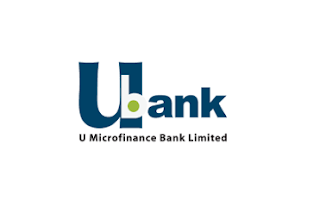|
Getting your Trinity Audio player ready...
|
Introduction:
Microfinance Banks in Pakistan, U Microfinance Bank (UBank) has recently disclosed its half-yearly reports covering the period from January 2023 to June 2023. However, the release comes with a notable delay, setting it apart from the traditional timeline of August or early September. The reports, unveiled in late November, bring to light various aspects of UBank’s financial landscape, presenting a mix of surprises and clarifications.
Restating 2022 Figures:
One of the focal points of interest in these reports is the restatement of UBank’s year-end figures for 2022. Initial speculation revolved around a substantial Rs 8 billion provisioning charge imposed by the State Bank of Pakistan (SBP), potentially posing a threat to UBank’s financial stability. The shift in leadership in October, coupled with delayed financial reports, fueled these speculations.
However, a decisive press release from the PTCL Group on October 23 vehemently dismissed all allegations and uncertainties, emphasizing UBank’s robust and resilient capital base. The recently revealed financial statements showcase an equity figure of Rs 5.3 billion at the end of June 2023, surpassing the SBP-mandated minimum capital of Rs 1 billion. Furthermore, UBank reported a noteworthy profit after tax of Rs 1.4 billion.
Revisions and IFRS-9 Impact:
While confirming UBank’s financial stability, the statements also shed light on revisions made to the 2022 figures. UBank wrote off Rs 1.7 billion as a credit loss allowance in its restated half-year 2022 statement, a significant increase from the initially reported Rs 248 million. This adjustment is attributed to the application of the International Financial Reporting Standards (IFRS-9).
IFRS-9, governing the treatment of financial instruments, necessitates a periodic assessment of the outstanding loan portfolio under the Expected Credit Loss (ECL) model. Concerns raised by the SBP regarding the treatment of rescheduled loans under this model prompted a reassessment by UBank’s auditors. The misclassification of a portion of the Covid-era rescheduled portfolio under stage one of the ECL model was deemed erroneous, impacting the recoverability of these loans.
Financial Impact and Balance Sheet Adjustments:
The adjustments in the 2022 financial statements resulted in a decrease in net advances by approximately Rs 4 billion. This, in turn, influenced the balance sheet, with total assets decreasing by Rs 2.8 billion, total liabilities seeing a dip of Rs 80 million, and total capital dropping by Rs 2.7 billion.
Performance in H1 2023:
Moving into the first half of 2023, UBank reported a substantial profit after tax of Rs 1.4 billion, a notable improvement from the restated June 2022 statement showing a loss of Rs 175 million. The markup income more than doubled, reaching Rs 19.8 billion, matched by a threefold rise in markup expenses to Rs 15.95 billion. Consequently, the net markup income saw a nominal 17% increase, reaching Rs 3.8 billion.
Operational Shifts and Deposit Dynamics:
UBank’s advances grew to Rs 69 billion from Rs 55 billion, while investments declined by around 39% to Rs 84 billion, and borrowings decreased by approximately 42% to Rs 67 billion by June 2023. Deposits, a crucial aspect, increased from Rs 92 billion in 2022 to Rs 99 billion in the first half of 2023.
In contrast to other telecom-based microfinance banks focusing on branchless banking, UBank opted for a conventional brick-and-mortar strategy, opening branches in urban cities. However, a concentration risk in deposits was highlighted in the VIS credit report, particularly within the top 50 depositors, posing potential liquidity risks for the bank. The recent half-yearly reports indicate a shift in deposit dynamics, with individual deposits surging by 87%, contributing to a substantial change in UBank’s deposit portfolio.

